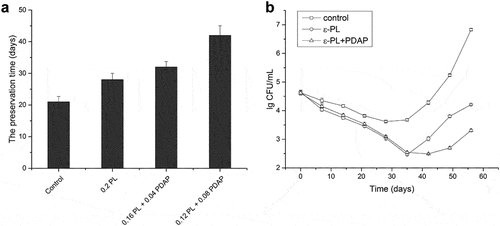Figures & data
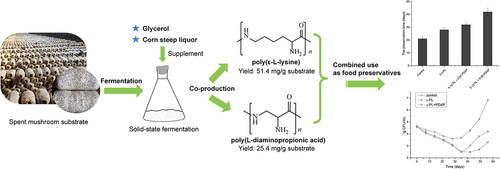
Figure 1. Fermentation using spent mushroom substrate without additives for the production of poly(L-diaminopropionic acid) (PDAP) and poly(ε-L-lysine) (ε-PL). Data points represent means (n = 3) ± standard deviation (SD).
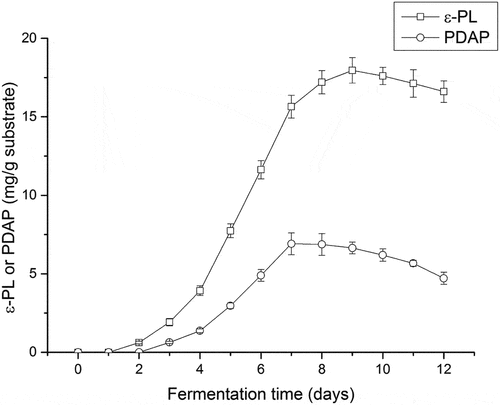
Figure 2. Determination of optimal carbon and nitrogen sources for solid-state fermentation supplementation. (a) Effect of different carbon sources on poly(L-diaminopropionic acid) (PDAP) and poly(ε-L-lysine) (ε-PL) production; (b) Effect of different nitrogen sources on PDAP and ε-PL production. Data points represent means (n = 3) ± standard deviation (SD).
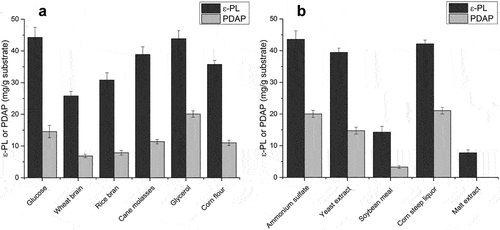
Figure 3. Optimization of fermentation conditions for co-production of poly(L-diaminopropionic acid) (PDAP) and poly(ε-L-lysine) (ε-PL). (a) Effect of initial moisture; (b) Effect of initial pH; (c) Effect of fermentation temperature; (d) Effect of inoculum level. Glycerol and corn steep liquor was used as carbon and nitrogen sources for optimization. Data points represent means (n = 3) ± standard deviation (SD).
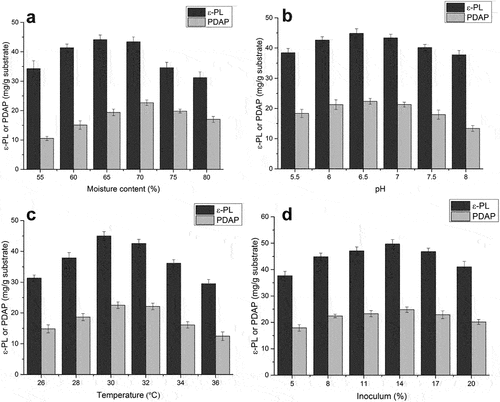
Figure 4. Time course of co-production of poly(L-diaminopropionic acid) (PDAP) and poly(ε-L-lysine) (ε-PL) under optimal fermentation conditions. (a) Amplified fermentation in 5 L flask; (b) Repeated-batch fermentation. Data points represent means (n = 3) ± standard deviation (SD).
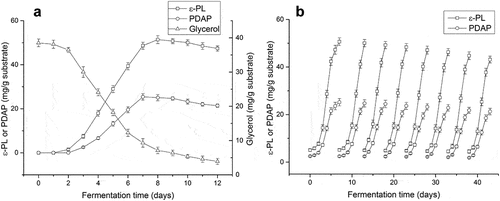
Figure 5. Application of poly(L-diaminopropionic acid) (PDAP) and poly(ε-L-lysine) (ε-PL) in the preservation of freshly pressed grape juice. (a) The preservation time of freshly pressed grape juice under different treatments. Control: Without treatment; 0.2 PL: treated with 0.2 g/kg ε-PL; 0.16 PL + 0.04 PDAP, treated with 0.16 g/kg ε-PL plus 0.04 g/kg PDAP; 0.12 PL + 0.08 PDAP, treated with 0.12 g/kg ε-PL plus 0.08 g/kg PDAP; (b) Microbial growth in freshly pressed grape juice during preservation under different treatments. Data points represent means (n = 3) ± standard deviation (SD).
